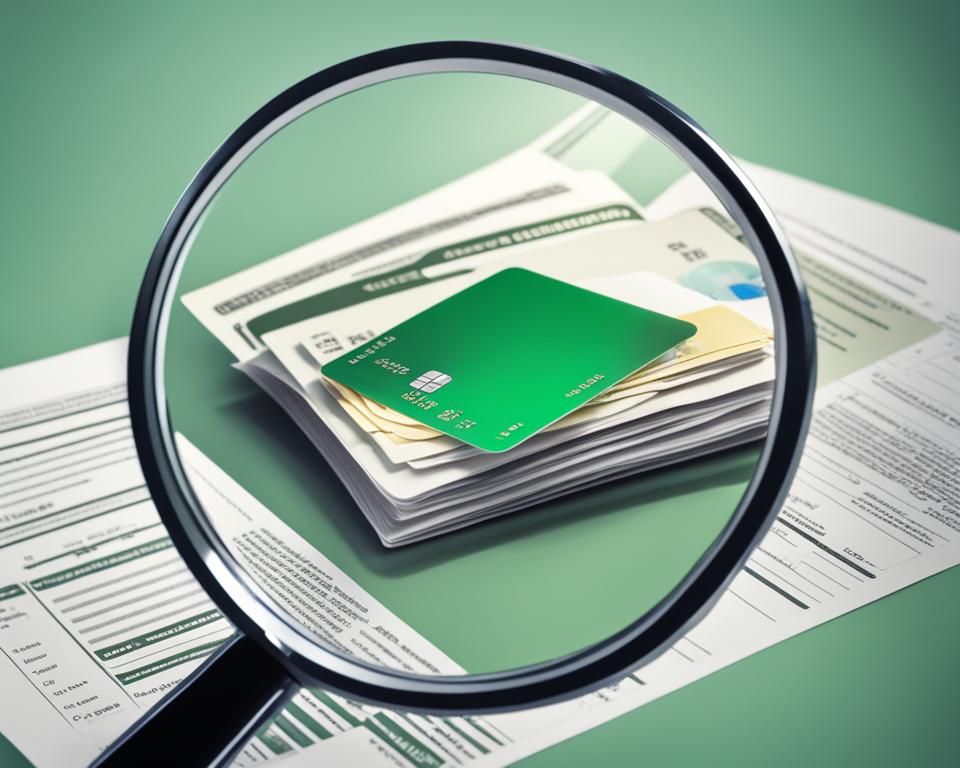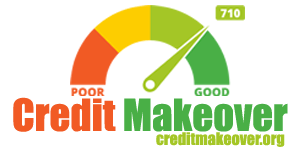As Americans strive for financial freedom, the urge to resolve debt worries grows increasingly pressing. In a landscape where every penny counts, finding the right debt relief options is reminiscent of searching for a lifeline amidst turbulent seas. These options serve as a beacon of hope, illuminating the path toward rebuilding financial stability and crafting a future unencumbered by the chains of insurmountable debt.
For those who find themselves navigating the often intimidating world of finance, dissecting the complexities of debt resolution is paramount. Whether it’s through consolidation, settlement, or other means, the goal is clear: to devise a sustainable strategy that can mend the sails of one’s financial vessel, ensuring it can once again catch the winds of prosperity.
Key Takeaways
- Understanding the various debt relief options is crucial in the pursuit of financial freedom.
- Choosing the right strategy requires a thorough analysis of one’s financial situation to resolve debt worries efficiently.
- It is essential to distinguish between viable debt relief programs and those that are likely to be scams.
- Embarking on the journey of debt relief leads to rebuilding financial stability and a healthier fiscal future.
- Seeking professional guidance can be an invaluable step in customizing an approach that aligns with individual needs and goals.
Understanding Debt Relief Strategies
When financial burdens become overwhelming, individuals often turn to debt relief strategies as a lifeline. These methods are designed not only to manage or reduce the amount owed but also to help regain a sense of control over one’s finances. It’s vital to understand each option’s features, risks, and potential benefits. Some may offer immediate relief, while others lay the foundation for long-term financial health.
What Constitutes Debt Relief?
Debt relief encompasses various approaches to alleviating the financial strain caused by mounting debts. Programs like debt consolidation seek to merge multiple debts into one manageable monthly payment, often at a lower interest rate. Debt settlement services work with creditors to allow you to pay back less than what you owe. Bankruptcy may provide a fresh start by erasing eligible debts, and debt management strategies cooperate with creditors to possibly lower interest rates and create a feasible payment plan.
The Impact of Debt on Financial Stability
Holding significant debt can destabilize an otherwise sound financial situation. It can restrict personal cash flow, diminish credit scores, and create ongoing stress and uncertainty. Therefore, investigating relief options can be pivotal in preventing financial decline and reinstating stability.
Comparing Debt Relief Tools and Programs
Comparing debt relief programs requires careful examination of several critical factors, such as the implications for credit scores, overall financial recovery, and possible tax considerations. The table below provides an overview:
| Strategy | Impact on Credit Score | Financial Health Benefit | Tax Implications |
|---|---|---|---|
| Debt Consolidation | Can improve over time with consistent payments | Streamlines payments, potential interest savings | Typically none |
| Debt Settlement | Negative impact due to possible non-payments | Reduce overall debts owed | Forgiven debt may be taxable |
| Bankruptcy | Significantly negative but can be rebuilt over time | Discharges eligible debts for a fresh start | Certain debts non-dischargeable and might have tax consequences |
| Debt Management | May initially drop but can improve with on-time payments | Helps avoid default and reduce interest rates | Typically none |
Choosing the right option, whether it’s consolidating your debts into a single payment or taking more significant measures such as filing for bankruptcy, is contingent on a thorough assessment of individual financial circumstances and long-term objectives.
The journey towards financial recovery begins with knowledge. By understanding your options, such as debt management plans or debt settlement negotiations, you can make an informed decision about how to tackle your debts and work your way back to financial stability.
Recognizing When to Seek Debt Relief
Understanding when to reach out for debt relief programs is crucial for maintaining financial well-being. If the burden of settling debts grows too heavy, especially when unsecured debt totals 50% or more of an individual’s gross income, it’s a clear signal that external help may be needed. Additionally, situations where debts cannot realistically be repaid within a five-year time frame should prompt consideration of various relief options. Seeking financial guidance to navigate these troubled waters is a proactive step towards regaining financial stability.
On the other hand, those who prefer to sidestep formal relief programs, such as bankruptcy, may opt for crafting their own repayment plan. This personal approach can include implementing a stricter budget and negotiating directly with creditors to establish more manageable repayment terms. Below, we present criteria to help determine the most appropriate course of action.
| Criteria | Self-Managed Plan | External Debt Relief |
|---|---|---|
| Debt-to-Income Ratio | Less than 50% | 50% or higher |
| Repayment Feasibility | Within 5 years | Not feasible within 5 years |
| Financial Discipline | High | Moderate to low |
| Willingness to Communicate with Creditors | Willing and able | Prefer third-party intervention |
| Risk of Bankruptcy | Low to moderate | High |
Assessing your financial situation against these criteria can guide you toward the right debt relief programs or self-management strategies. Remember, whether you opt for professional financial guidance or take the reins yourself, the objective remains the same: a life free of oppressive debt.
Identifying Legitimate Debt Relief Programs
When seeking financial respite from overwhelming debt, the pathways laid out in front of you may seem endless and fraught with uncertainty. Key considerations must be made to distinguish legitimized debt settlement arrangements and credit counseling from potential scams. The savvy consumer must navigate the industry with a discerning eye, recognizing the red flags of fraudulent practices to secure genuine debt relief without exacerbating financial strain.
Beware of Debt Relief Scams
Debt relief scams prey on the urgent needs of those drowning in financial liabilities, offering false promises of quick fixes. Unsolicited offers, guarantees of debt elimination, and requests for upfront fees are telltale signs of fraudulent operations. It’s imperative to perform due diligence, seeking reputable organizations with proven track records in debt relief success. Transparency in operation and compliance with industry regulations are the hallmarks of an entity operating within legal boundaries.
Important Questions to Ask Providers
Engaging with potential debt relief providers begins with a sequence of probing questions to ensure you’re not stepping into a financial quagmire. Inquire about their qualifications, the full disclosure of all fees, the intricacies involved in creditor payment regimes, and the implications such actions might have on taxation. The straightforwardness and clarity of responses provided will serve as an indicator of the provider’s legitimacy.
When entering agreements for debt relief, one ventures into an arrangement that promises a reduction of financial burdens but also harbors inherent risks. Understanding the agreements you’re entering is as crucial as the relief they claim to offer. Here are some vital questions you might consider putting forth:
- What credentials do your counselors have?
- Are there any setup or monthly fees, and if so, what are they?
- How is the payment process managed with my creditors?
- Could this process have tax implications for me?
| Provider Attribute | What to Look For |
|---|---|
| Counselor Qualifications | Accreditation and certification in financial counseling or debt management |
| Transparency of Fees | No hidden charges, detailed information about all costs involved |
| Process of Payment | A clear timetable of payments to creditors, ensuring agreements are honored |
| Tax Considerations | Guidance on how settled debt could affect your tax liabilities |
The engagement with a debt relief provider is not a transaction but a partnership – a strategic alliance aiming to establish a more secure financial standing. Thus, taking the steps to protect oneself from the perils of unscrupulous practices is a proactive measure in the pursuit of economic stability.

Analyzing Debt Relief through Bankruptcy
When it comes to alleviating debt burdens, bankruptcy is a legal route that can offer a fresh start. This section dives into the mechanisms of Chapter 7 liquidation and Chapter 13 bankruptcy, detailing their processes, consequences, and important considerations that impact credit scores and overall financial recovery. Seeking legal advice is often a wise step when contemplating these options, as each path presents different implications for debtors.
Chapter 7 Bankruptcy Explained
Chapter 7, commonly known as liquidation bankruptcy, involves the sale of a debtor’s non-exempt assets by a trustee. The proceeds are then distributed to creditors in order to discharge unsecured debts. Bankruptcy under Chapter 7 can typically be completed within several months, offering swifter debt relief compared to other methods. However, it’s crucial to understand that not all assets or types of debts are eligible for liquidation or discharge.
Chapter 13 Bankruptcy Overview
Differing substantially from Chapter 7, Chapter 13 bankruptcy allows debtors to keep their property and enter into a court-mandated repayment plan. These plans usually extend over a period of three to five years and are tailored to the debtor’s income. This type of bankruptcy favors those with regular income who can adhere to the structured payment schedules, thus preventing foreclosure on homes or repossession of valuable assets.
Bankruptcy: Long-Term Implications and Considerations
Bankruptcy is not a decision to be taken lightly, as it carries long-term ramifications for credit history and financial trustworthiness. A record of bankruptcy can remain on credit reports for up to a decade, impacting eligibility for future loans or credit. Both personal and professional financial reputations can be affected, making the decision to file a matter for careful analysis and, often, professional counsel.
Additionally, the implications of bankruptcy extend beyond the individual, potentially affecting co-signers and family members associated with the debtor’s finances. Before deciding on declaring bankruptcy, it’s advisable to weigh all possible consequences and explore all other debt relief options.
Evaluating Debt Management Plans
When the burden of unsecured debts becomes overwhelming, debt management plans (DMPs) offer a structured approach to regaining financial control. By working with a credit counseling agency, debt management clients can embark on a path to financial recovery, potentially avoiding more severe options like bankruptcy.
How Debt Management Plans Work
A DMP aims to simplify the repayment of unsecured debts by consolidating them into one monthly payment. This plan is organized and distributed by a credit counseling agency, which negotiates with creditors on the client’s behalf to possibly lower interest rates and eliminate late fees, enabling a more manageable repayment process.
The Role of Credit Counseling Agencies
Selecting a reputable and accredited credit counseling agency is a critical decision for those seeking a DMP. These agencies assess a client’s financial situation, provide personalized advice, and work to establish a feasible monthly payment schedule that aligns with the client’s income and expenses.
| Benefits of Debt Management Plans | Considerations |
|---|---|
| Consolidated monthly payments | Possibility of account closure |
| Negotiated interest rates | Agency fees |
| Avoidance of bankruptcy | Commitment to a long-term payment plan |
| Professional financial advice | Impact on credit score |
Through their guidance, credit counseling agencies can serve as a bridge between struggling debtors and financial stability, by cultivating relationships with creditors and advocating for the interests of their debt management clients.
Debt Consolidation as a Relief Option
When faced with mounting debts, finding a sustainable way to manage your financial obligations is paramount. Consolidating debts can be an effective strategy to regroup multiple high-interest obligations into a single, more manageable payment plan. This approach often appeals to those seeking to not only simplify their finances but also potentially benefit from more favorable terms, such as lower interest rates or reduced monthly payments.
Is Debt Consolidation Right for You?
Debt consolidation may provide the relief you’re looking for if you’re juggling various debts with high interest rates. By transferring your balances to a balance transfer credit card with a lower interest rate, or by securing a debt consolidation loan, you can streamline your repayments and save on interest. This tactic can be particularly effective when you have a steady income and a plan to prevent racking up additional debt.
Comparison with Other Debt Relief Options
While consolidating debts is advantageous for many, it’s important to assess how it stacks up against other debt relief mechanisms. Here’s a comparative look:
| Debt Consolidation | Debt Management Plan | Bankruptcy |
|---|---|---|
| May lower the overall interest rate | Negotiates lower interest rates | Potential discharge of debts |
| Single monthly payment | Single monthly payment through credit agency | Immediate stay on collection activities |
| Requires good credit for best terms | No loan required | Significant negative impact on credit score |
To decide if debt consolidation is the right course of action for you, evaluate your financial situation thoroughly. Consider the interest rates you’re currently paying and the terms of any debt consolidation loan you’re considering. Above all, adopting a disciplined spending approach to avoid further debt is crucial to making debt consolidation work effectively.
Options for DIY Debt Relief
For those seeking greater control over their financial future, engaging in DIY debt relief can be an empowering choice. It’s a path that requires commitment and a solid understanding of personal financial management, focusing on two primary areas: debt settlement negotiations and stricter budgeting.
Negotiating directly with creditors is a proactive step towards debt resolution — a task that involves clear communication and determination. The objective is to reach an agreement that benefits both parties, creating a feasible payment plan or even reducing the overall debt. This process, often referred to as creditor negotiations, can lead to significant savings and help avoid the need for third-party settlement services.
Budgeting decisively changes the way individuals manage their finances. Adhering to a stricter budget requires a detailed understanding of one’s income and expenses. It often involves cutting non-essential spending and reallocating funds to prioritize debt payment — a method that can greatly accelerate the path to becoming debt-free without incurring additional charges.
To illustrate the potential outcomes of these efforts, below is a table comparing the traditional method of only making minimum payments versus utilizing a strategically stricter budgeting approach:
| Debt Repayment Method | Total Interest Paid | Time to Repay | Effect on Credit Score |
|---|---|---|---|
| Minimum Payments Only | Higher Interest Costs | Several Years Longer | Slow Improvement |
| Stricter Budgeting | Reduced Interest Costs | Shorter Repayment Period | Quicker Positive Impact |
Aside from meticulous budgeting and negotiation tactics, some debtors find relief strategies in methods like the snowball or avalanche payment strategies. These methods focus on the repayment of debts either from the smallest to the largest balance or by tackling the highest interest rates first, respectively. While these tactics do not involve professional guidance, they require individuals to stay diligent and disciplined with their financial plans.
Ultimately, the journey to debt freedom through DIY efforts is not without its challenges, but for some, the potential savings and sense of accomplishment make it a worthwhile endeavor.
Pros and Cons of Debt Settlement
When struggling with overwhelming debt, some individuals turn to debt settlement companies as a potential solution. These companies aim to negotiate debts on behalf of consumers in hopes of reducing the amount owed. However, it’s important to weigh both the advantages and the risks involved in the debt settlement process, as the impact on one’s financial health can be significant.
The Process of Debt Settlement
Debt settlement involves enlisting a company that works to reach an agreement with creditors to pay off a lump sum that is less than the full amount owed. The process usually requires the debtor to make regular deposits into an account managed by the debt settlement company, which will then be used to pay creditors once a settlement is negotiated. During this negotiation phase, it’s often suggested that debtors stop making payments directly to creditors, which can lead to additional credit damage while the settlement is pending.
The Risks Associated with Debt Settlement
The consideration to use a debt settlement service should not be taken lightly as there are several risks to consider:
- Debt settlement can lead to increased debt from late fees and accumulated interest if debts are not settled quickly.
- Significant harm to credit scores due to missed payments and unsettled debts during the negotiation process.
- Potential legal action from creditors if debts remain unpaid.
- Settled debts may be considered taxable income, resulting in a surprise tax bill.
| Aspect of Debt Settlement | Potential Advantage | Potential Disadvantage |
|---|---|---|
| Negotiated Payoff Amount | Ability to pay less than what is owed | Added fees and interest may offset savings |
| Impact on Credit | Debt fulfilment can eventually improve credit | Initial and possibly long-term credit damage |
| Legal Implications | May avoid bankruptcy proceedings | Risk of lawsuits from creditors |
| Tax Consequences | Potential to reduce overall debt burden | Forgiven debt could be taxed as income |
In assessing whether debt settlement is the right course of action, borrowers must take a careful look at the potential for credit damage, the reliability of debt settlement companies, and the feasibility to negotiate debts efficiently to avoid prolonged financial strain.
Credit Counseling Services for Debt Relief
Amidst the various options for tackling long-standing debts, credit counseling has emerged as a bastion for individuals in financial strife. With a hand firmly extended towards those drowning in a sea of bills, these services offer more than mere advice; they provide actionable debt relief solutions.
What Credit Counseling Entails
At its core, financial counseling works to unveil the complexities of one’s monetary obligations, parsing through the minutiae to draft a manageable blueprint towards solvency. Credit counselors conduct thorough reviews of personal financial statements, meticulously crafting tailored strategies for each client. The methodologies may span budget reevaluation or the initiation of a debt management plan (DMP), which consolidates payments and opens dialogues for renegotiated creditor terms.
The Advantages of Professional Financial Guidance
The merits of professional financial guidance are manifold. Boasting expertise in the intricacies of debt relief, reputable counselors offer more than cursory advice; they proffer educational resources and tools designed for long-term financial health. Their low-cost or sometimes even free service makes financial counseling an accessible beacon of hope for various income brackets. It’s not solely about settling accounts; it’s about building a scaffold of knowledge where informed fiscal decisions become second nature.

Navigating Debt Relief Programs
Making informed personal finance decisions involves carefully navigating through various debt relief programs to find one that aligns with your financial goals and situation. It is not merely about eliminating current debt but also about strategizing for a stable financial future with a suitable debt payoff method.
How to Choose the Appropriate Program
Choosing the right debt relief program requires a keen assessment of its potential long-term financial impact. Consider not only how it will affect your credit scores but also its cost-effectiveness over time. Prioritize programs offered by reputable credit counseling services with a proven track record of transparency and success. These organizations should not only guide you towards freedom from debt but also towards making wiser financial decisions in the future.
Key Features of Effective Debt Relief Programs
An effective debt relief program is anchored on clear, transparent procedures and provides a structured path towards financial recuperation. Key features to look for include comprehensive payment structures detailing each step towards debt payoff and fees that are both manageable and justified. To ensure a stress-free journey to debt freedom, realistic timelines for repayment should be central to any program under consideration.
| Feature | Benefits | Examples |
|---|---|---|
| Transparent Payment Structures | Helps track progress and manage expectations | Itemized statements from credit counseling agencies |
| Reasonable Fees | Ensures affordability and value for services rendered | Low-cost initial counseling sessions |
| Proven Success Records | Confirms the credibility and effectiveness of the program | Testimonials and case studies from past clients |
| Realistic Repayment Timelines | Allows for financial planning without unrealistic pressure | A structured timeline for graduated debt reduction |
The Path to Financial Freedom
Navigating the journey to financial freedom can be a liberating experience post debt relief. It is essential to build a solid foundation to maintain one’s newfound economic autonomy. Crafting a strategy for avoiding debt and taking key steps towards rebuilding credit are critical for sustaining long-term financial well-being. Moreover, enhancing financial literacy empowers individuals to make informed decisions moving forward.
Strategies for Maintaining Financial Health After Debt Relief
After clearing the hurdles of debt, the next objective is to protect and progress one’s fiscal health. A robust strategy includes:
- Creating and sticking to a realistic budget that accounts for income and expenses.
- Monitoring spending habits to prevent falling back into high levels of debt.
- Establishing an emergency fund to cover unforeseen expenses, reducing the need for credit.
- Setting financial goals that are both achievable and measurable.
These strategies require discipline but can lead to a life free of financial stress. Deploying tools such as budgeting apps can assist with expense tracking and goal setting.
Tools and Resources for Ongoing Financial Management
Various tools and resources can aid in the continuous management of personal finances:
- Using credit monitoring services to stay vigilant on credit reports and rebuilding credit.
- Accessing educational materials provided by financial institutions to improve financial literacy.
- Engaging in financial planning sessions with certified financial advisors for professional guidance.
These resources not only assist individuals in maintaining a debt-free life but also empower them to build wealth over time.
Financial freedom is not merely about escaping debt; it’s about crafting a sustainable financial lifestyle. The table below highlights key contrasting features of common financial tools:
| Feature | Budgeting App | Credit Monitoring Service | Financial Advisor |
|---|---|---|---|
| Primary Function | Track expenses and income | Monitor credit changes and potential fraud | Provide tailored financial advice |
| User Involvement | High (Daily input required) | Low to Medium (Regular check-ins) | Varied (Based on services engaged) |
| Cost | Free to Low | Free to High (depending on depth of service) | Fee-based or Commission-based |
| Benefit | Organize finances | Rebuild and protect credit health | Custom financial planning |
The right combination of tools and practices can lay the groundwork for a life marked by financial security and independence. Taking proactive steps and utilizing resources can offer immense support in maintaining lasting financial health.
Tax Implications of Debt Relief Options
As individuals navigate the complexities of resolving their financial burdens, it’s imperative to recognize the interplay between forgiven debt and taxable income. In the quest for economic solace, overlooking the hidden tax consequences governed by IRS regulations can result in unforeseen fiscal responsibilities.

Under IRS guidelines, forgiven debt may not just dissipate; it often transforms into taxable income. This counterintuitive twist can catch many debtors off-guard, underscoring the importance of tax planning when pursuing debt relief strategies.
Relief from debt can paradoxically give birth to a tax burden. Acknowledging and preparing for this outcome is a pivotal step in achieving genuine financial recovery.
To equip our readers with the knowledge needed to avoid tax-related surprises, we provide an illustrative table indicating scenarios where forgiven debt might become taxable:
| Debt Relief Option | Taxable Event Occurrence | IRS Form Involved |
|---|---|---|
| Debt Settlement | Yes, except if insolvent or certain cases under bankruptcy | Form 982 |
| Chapter 13 Bankruptcy | No, discharged debt is not considered taxable | – |
| Chapter 7 Bankruptcy | No, discharged debt is not considered taxable | – |
| Mortgage Forgiveness (under specific programs) | Sometimes, based on qualifications and program specifics | Form 1099-C |
| Non-Federally Backed Private Student Loan Forgiveness | Yes | Form 1099-C |
Meticulous scrutiny of these IRS regulations is essential, as nuances in legislation can create a labyrinthine environment for taxpayers to navigate. It’s recommended that those who have recently had debt forgiven or are considering such relief consult with a tax professional to explore the quagmire of tax obligations that may loom.
Debt Relief Options for Varied Financial Situations
Navigating the complexities of financial challenges requires not just a one-size-fits-all plan, but rather a mosaic of personalized debt solutions. As individuals face distinct fiscal obstacles, the need for debt relief strategies that mirror their unique situations becomes clear. Achieving debt relief success hinges upon the creation and implementation of custom-tailored plans that reflect an individual’s specific circumstances and financial objectives.
Customized Solutions for Unique Debt Challenges
Every individual’s journey towards financial stability is fraught with unique challenges. To meet these head-on, debt relief programs must be intricately crafted to consider variables such as the amount of debt, the creditor’s terms, and the debtor’s income levels and living expenses. These personalized programs are the cornerstone of effectively overcoming monetary hurdles, standing as testament to the ethos that personal finance is indeed personal.
Success Stories and Case Studies
There’s nothing more encouraging than seeing real-life examples of others who have triumphed over their financial burdens. Case studies illustrating a range of scenarios—from massive credit card debts to overwhelming medical bills—showcased within debt relief success narratives, serve as a beacon of hope. They demonstrate the potency of carefully curated debt relief plans and fortify the belief that with the right approach, financial freedom is within reach.
Conclusion
In navigating the intricate landscape of personal finance, individuals have at their disposal a diverse array of debt relief options, each crafted to address distinct financial situations. Whether opting for the clean slate that bankruptcy provides, the strategic alignment of debt consolidation, or the guided expertise from credit counseling services, the end goal remains consistent: to achieve financial stability. The journey towards this stability, however, is not a one-size-fits-all path but a tailored route carved out through informed debt decisions.
As consumers approach this crossroads of financial recovery, the significance of understanding the nuances of each debt relief tool cannot be overstated. Every decision, from the type of program to the manner in which one engages with creditors, lays the groundwork for future economic health. It is the meticulous consideration of potential outcomes, paired with transparent and ethical guidance, that constructs the foundation for a robust personal finance journey.
Ultimately, the quest to extract oneself from the burdens of debt and to stride towards fiscal independence is an intentional and proactive process. It demands a blend of awareness, dedication, and perseverance. With a steadfast commitment to a well-fitted personal plan, the realization of debt freedom is not just a possibility but an achievable destination for those who seek it with vigor and clarity.
FAQ
What Constitutes Debt Relief?
Debt relief is the process of seeking out strategies meant to reduce the overall debt burden or make the debt easier to manage. These strategies might include debt consolidation, credit counseling, debt settlement, or filing for bankruptcy among other options.
How Can Debt Relief Improve Financial Stability?
By reducing debt amounts, lowering interest rates, or restructuring payment terms, debt relief can lower monthly payments and help individuals avoid defaults or bankruptcy. Timely and manageable payments contribute to rebuilding financial stability and achieving financial freedom.
What Are the Differences Between Debt Consolidation, Debt Settlement, and Bankruptcy?
Debt consolidation involves combining multiple debts into one with the intention of securing lower interest rates and monthly payments. Debt settlement is the process of negotiating with creditors to accept less than what is owed. Bankruptcy involves a legal declaration of the inability to repay debts, either erasing them or restructuring them under court supervision.
When Should One Consider Debt Relief Programs?
Debt relief programs should be considered when debts become overwhelming and one’s financial situation cannot improve without intervention—typically when unsecured debts exceed half of one’s gross income or cannot be repaid within five years.
How Can You Avoid Debt Relief Scams?
To avoid scams, look for agencies that don’t require upfront fees, make exorbitant promises, or lack proper accreditation. Researching the company’s reputation and seeking reviews from prior clients can provide additional safeguards.
What Key Questions Should I Ask Potential Debt Relief Providers?
Ask about their qualifications, fees, details of how payments are distributed to the creditors, potential tax implications of their service, and specifics about what to expect in terms of communication with your creditors.
What Are the Basics of Chapter 7 and Chapter 13 Bankruptcy?
Chapter 7 bankruptcy seeks to liquidate eligible assets to repay creditors, potentially erasing remaining debts. Chapter 13 allows debtors to keep their property but mandates a repayment plan over three to five years. Both types have long-term credit implications.
How Do Debt Management Plans Function?
Debt management plans consolidate debts into one single payment with potentially lower interest rates or waived fees, managed through a credit counseling agency, aimed at making repayment more manageable.
Is Debt Consolidation the Right Choice for Me?
If you have multiple high-interest debts and can secure a consolidation loan or balance transfer credit card with lower interest rates than your current debts, and can maintain consistent payments, then debt consolidation might be appropriate for you.
Can I Settle Debts On My Own?
Yes, individuals can attempt to negotiate directly with creditors, appeal for hardship programs, or follow personal repayment strategies, but these require a thorough understanding of financial matters, negotiation skills, and discipline.
What Are the Risks of Debt Settlement?
The risks include potentially worsening your debt due to late fees and interest, substantial credit score damage, potential legal action from creditors, and tax implications for forgiven debt amounts.
What Assistance Can Credit Counseling Services Provide?
Credit counseling services can offer a personalized review of your financial situation and suggest various debt relief options, including debt management plans, to help negotiate better terms with creditors.
How Do I Choose the Best Debt Relief Program for My Situation?
Consider factors such as the program’s cost-effectiveness, its impact on your credit score, long-term financial benefit, and the provider’s reputation. Choose a program that aligns with your debt amount, income level, and financial goals.
What Are Some Strategies for Achieving and Maintaining Financial Health After Debt Relief?
Strategies include creating and sticking to a budget, setting up an emergency fund, avoiding unnecessary debt, and continuously educating oneself about financial management and responsible credit use.
Are There Tax Implications for Debt Forgiven Through Debt Relief Options?
Yes, debts that are forgiven can be treated as taxable income by the IRS. It is crucial to understand these potential tax liabilities when considering debt settlement or any relief option that could result in reduced debt amounts.
How Do Debt Relief Options Differ Based on Individual Financial Situations?
Debt relief options differ based on one’s overall financial picture, types of debt owed, and income stability. Customized solutions consider these unique factors to formulate a plan that will lead to a successful resolution and prevent future debt accumulation.





